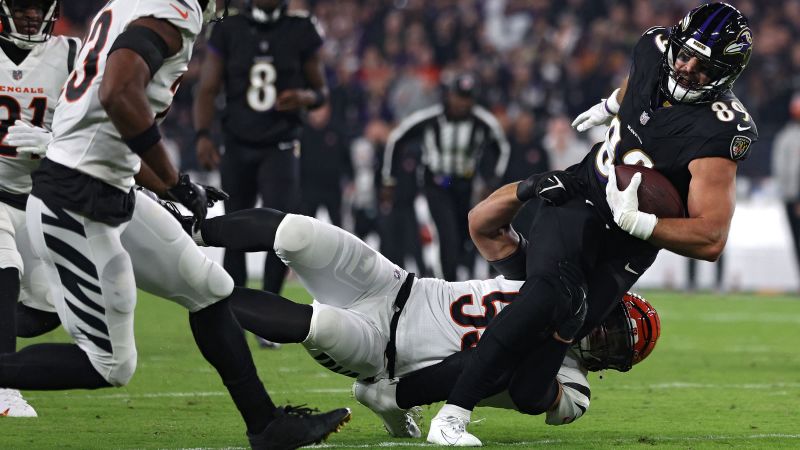NFL Implements Hip-Drop Tackle Ban: Addressing Safety Concerns and Player Response
In a landmark decision, NFL team owners have unanimously approved a rule banning the contentious “hip-drop tackle” from the sport, marking a significant shift in the league’s approach to player safety. The decision comes after years of debate and mounting concerns over the tackle’s potential to cause severe injuries on the field. The ban, which was passed during the annual league meeting in Orlando, Florida, on Monday, signals a proactive effort by the NFL to prioritize player well-being and mitigate the risks associated with certain tackling techniques.

The hip-drop tackle, characterized by a defender unweighting themselves by swiveling and dropping their hips and/or lower body to trap the runner’s leg(s) at or below the knee, has sparked controversy and drawn scrutiny from both players and league officials alike. Instances of this tackle style resulting in player injuries, including fractures and ligament damage, have raised alarm bells within the NFL community, prompting calls for decisive action to address the issue.
Commissioner Roger Goodell, a staunch advocate for player safety, has been at the forefront of the push for a rule change regarding the hip-drop tackle. Citing data that revealed a staggering 25-fold increase in injury risk compared to standard tackles, Goodell emphasized the urgent need to protect players from unnecessary harm while upholding the integrity of the game. The decision to implement the ban reflects the league’s commitment to fostering a safer playing environment for all athletes involved.
However, the ban has not been without its detractors. The NFL Players Association (NFLPA) expressed concerns about potential confusion among players, coaches, officials, and fans regarding the enforcement of the new rule. Despite the NFLPA’s objections, the league proceeded with the ban, citing the paramount importance of prioritizing player safety above all else.
The ban on hip-drop tackles marks a significant milestone in the ongoing efforts to enhance player protection and reduce the incidence of avoidable injuries in professional football. By addressing a specific tackling technique known to pose heightened risks, the NFL aims to set a precedent for proactive measures aimed at safeguarding the well-being of its athletes.
Moving forward, the league will focus on educating players, coaches, and officials on the specifics of the ban, ensuring a smooth transition and consistent enforcement across all games. Additionally, ongoing dialogue between the NFL and other football leagues, such as the National Rugby League (NRL), provides valuable insights into effective coaching methods and officiating protocols, further strengthening the league’s commitment to player safety.
While the ban on hip-drop tackles represents a significant step forward, it also underscores the ongoing challenges faced by the NFL in balancing player safety with the physical demands of the sport. As the league continues to evolve and adapt to changing dynamics, initiatives aimed at minimizing injury risks and promoting long-term player welfare will remain a top priority.
In the wake of this historic decision, the NFL reaffirms its commitment to fostering a culture of safety, integrity, and excellence, ensuring that the game remains enjoyable and accessible to players and fans alike for generations to come.

